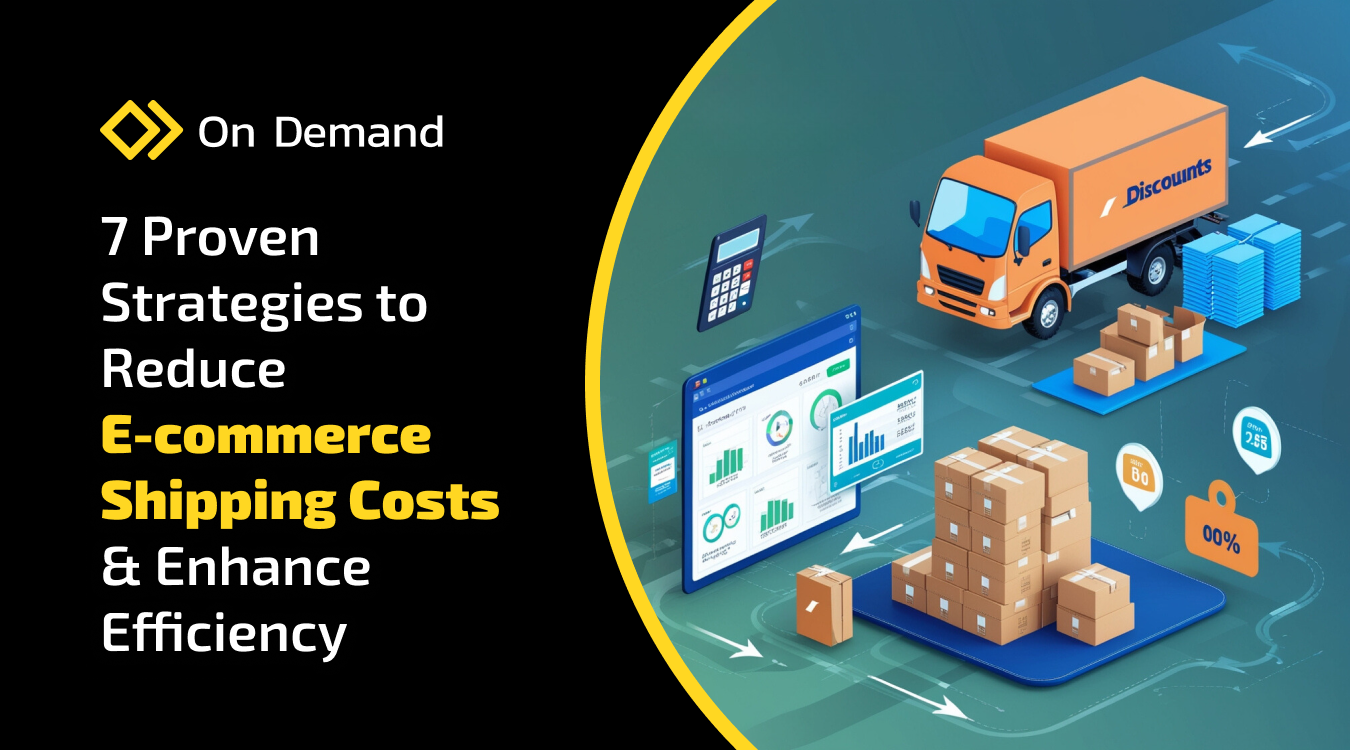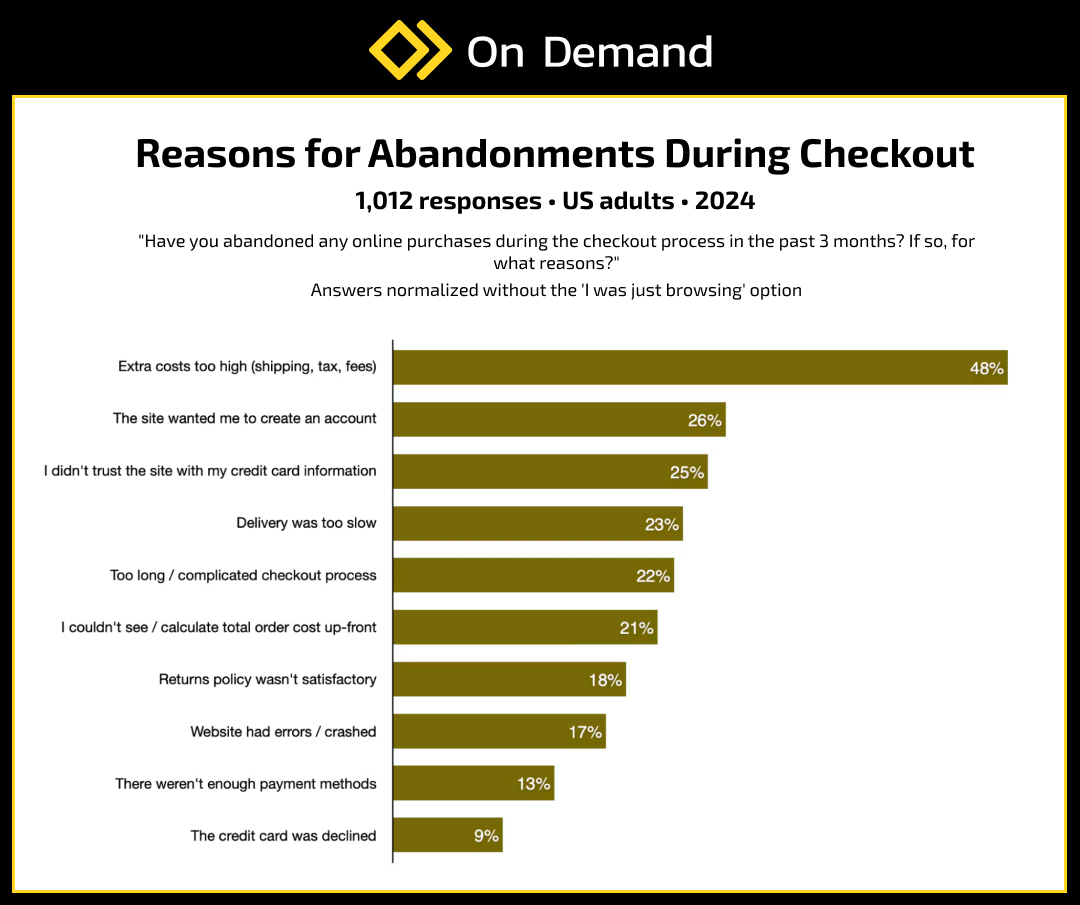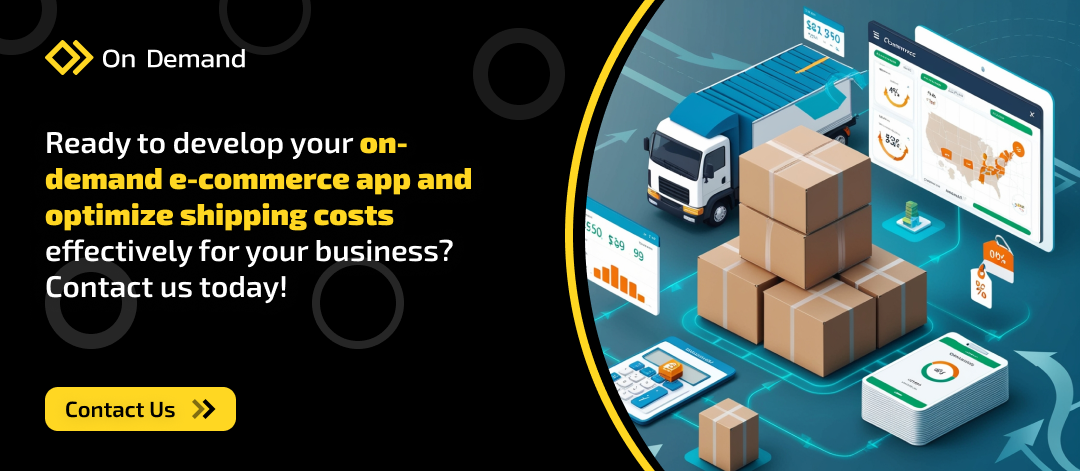Posted At: Sep 09, 2024 - 16,303 Views
5 minutes to read

The cornerstone of convenience that customers expect today is the rapid response of e-commerce in fulfilling their requests in minutes. Faster shipping, particularly hyperlocal and online grocery delivery, is increasingly demanded by customers to meet their growing need for instant gratification. Ultimately, e-commerce stores are left with no choice but to meet customers' minimal expectations. That's why, when Amazon Prime members were asked why they chose Prime membership, 70% of them cited fast and free delivery as the top reason.
Statistical analysis proves this argument: 48% of consumers demand next-day delivery, while 23% demand same-day delivery. But speed is not the only factor deciding a customer's convenience and loyalty to an expertly developed e-commerce delivery platform.
Providing a cost-effective shipping solution

61% of customers prefer to cancel the purchase if free delivery is unavailable. It signals that stores can work on improving experiences but not on increasing the shipping cost. In such a situation, E-commerce stores can neither charge for product delivery nor invest heavily in product shipping. The situation is even worse for stores operating with the on-demand mentality, which must reduce delivery costs while spending on the platform, algorithms, and infrastructure to support their delivery platform.
This begs the question: How can E-Commerce stores manage customer expectations and diminish shipping costs without hurting profits? Smart shipping strategies can help.
7 Ways to Reduce E-commerce Shipping Costs
1. Improve Shipping Efficiency with Real-Time Data
When a truck is only partially full, businesses must still make the full payment. The increased number of trips between the warehouse and drop-off points increases the delivery cost. Distant drop-off points, traffic congestion, and delays make deliveries inefficient. Resolving these inefficiencies with real-time data would reduce costs.
Batch shipping is a good practice: loading the truck with all shipments going to the same destination and sending them in batches increases shipping efficiency. However, the long wait times for customers can be mitigated by offering an extra discount for making the purchase. This method works well when the e-commerce store needs to ship big orders with predictable destinations and order volumes.
Freight consolidation is another practice that works well for stores shipping small items where timely delivery is important. Like the Uber pooling concept, businesses that can't fill a truck to maximum capacity can share the space and split shipping costs accordingly. This also helps minimize shipping costs, damage risks, and carbon footprint.
2. Provide More Delivery Options
The same-day or two-day shipping options can result in failed deliveries if customers are unaware of when the shipment will be delivered. If the customer fails to show up on time, it results in failed or delayed deliveries, increasing trips to the customers' drop-off points and, consequently, the shipping cost.
The best solution is to provide time slot options for shipment delivery so that customers can choose a delivery window during which they will be available to collect the order. Fast deliveries can then be accomplished at a reduced cost alongside an improved user experience.
3. Auto-Dispatch Delivery Tasks
As technology overtakes the role of human responsiveness in ensuring fast delivery of shipments across the globe, shipping service providers can now auto-assign deliveries across available drivers based on drop-off points. This ensures maximum deliveries are completed at the right time.
Mobile app development has enabled store owners to oversee their deliveries in real-time from their smartphones, with live tracking and insights available at the tip of their fingers. This ensures that a readymade e-commerce shopping app solution or even an Amazon clone app development can help plan routes and provide ETAs accurately, ensuring additional reduction in shipment costs as redundant drivers can be eliminated from one route and reassigned to another.
4. Packaging Should Be Done Intelligently
Packaging is an integral part of shipping that affects costs based on material type, design, quantity, and quality. When stores select packaging based on the shipment, costs can be reduced.
Additionally, the chances of returns can be reduced by displaying detailed product information, including material, size, photos, videos, and scale. Extending the return policy from a week to three months gives users more time to spend with the product, which can reduce the chances of returns. Prompt customer support can decrease customer anxiety and persuade users to keep the product.
5. Leverage Regional Warehousing
A popular way to reduce e-commerce shipping costs is to invest in regional warehouses that can store your products closer to customers. This can help reduce e-commerce shipping costs significantly in the long run. It also ensures quicker shipping between the regional warehouse and the customer and massively improves customer satisfaction.
A one-time investment into a regional warehouse or dark store rooms can enable the company to provide quicker delivery at cheaper shipping costs for the company and the consumer.
6. Negotiate with Multiple Shipping Carriers
Ensure you negotiate with multiple shipping carriers regularly to get the best possible price for your logistical needs. Negotiating with multiple shipping carriers is a great way to reduce e-commerce shipping costs and choose cost-effective rates appropriate for your requirements.
With shipping rates changing frantically across providers due to the distance, package size, and delivery speeds, it is important to maintain a strong relationship with multiple carriers for added chances to reduce e-commerce shipping costs.
7. Optimize Shipping Routes with AI
Planning your route manually often requires a lot of time and effort and will still be outdated as it can’t keep up with the ever-changing weather patterns, traffic, and other variables. This is why optimizing shipping routes by utilizing the power of AI from your very own cost-effective e-commerce app solution is a great way to reduce e-commerce shipping costs.
By reducing the time and distance delivery drivers spend on the road, AI can help optimize shipping routes, reducing fuel costs and significantly enhancing package delivery time.
Conclusion
Whether it works in your favor or not, customers now willingly purchase items at e-commerce stores offering free shipping and returns. You risk being pushed out of the market if you don't follow the trend. Unfortunately, stores invest heavily in product shipping to stay ahead of the competition. It's upsetting.
However, stores can reduce shipping costs by strategically incorporating certain practices into shipping methods. Practical steps like route optimization, smart packaging, auto-dispatch of delivery tasks, providing better delivery options, and enhancing shipping efficiency enable E-Commerce stores to make intelligent decisions.
Read More:- Mastering Grocery Delivery App Development: Building Your Own Instacart Clone
Frequently Asked Questions (FAQs):
- What are the best ways to reduce e-commerce shipping costs?
Reducing e-commerce shipping costs involves optimizing routes, leveraging regional warehouses, and negotiating with multiple carriers.- Optimize shipping routes with AI to reduce time and fuel costs.
- Use regional warehousing to store products closer to customers.
- Negotiate rates with various carriers to find cost-effective options.
- How does AI help in optimizing shipping routes?
AI helps plan the most efficient routes by considering real-time data like traffic and weather patterns, reducing fuel consumption and delivery time.- Real-time adjustments for unforeseen delays.
- Lower fuel costs due to reduced driving distances.
- Improved delivery times increase customer satisfaction.
- What is freight consolidation, and how does it reduce shipping costs?
Freight consolidation involves combining shipments from multiple sources to fill a truck, reducing costs for small item deliveries.- Minimizes space in trucks, lowering per-package costs.
- Reduces damage risks by less frequent handling.
- Lower carbon footprint due to fewer trips.
- Why is smart packaging important in reducing shipping costs?
Smart packaging minimizes material usage and securely packs products, reducing shipping costs and return rates.- Right-size packaging lowers material costs and shipping fees.
- Decreased return rates due to better product protection.
- Enhanced customer experience with detailed product info.
- How can regional warehousing help in reducing shipping costs?
Regional warehousing allows you to store products closer to customers, reducing shipping time and costs.- Faster deliveries enhance customer satisfaction.
- Lower shipping costs due to reduced distance.
- Long-term savings from strategic warehouse locations.

